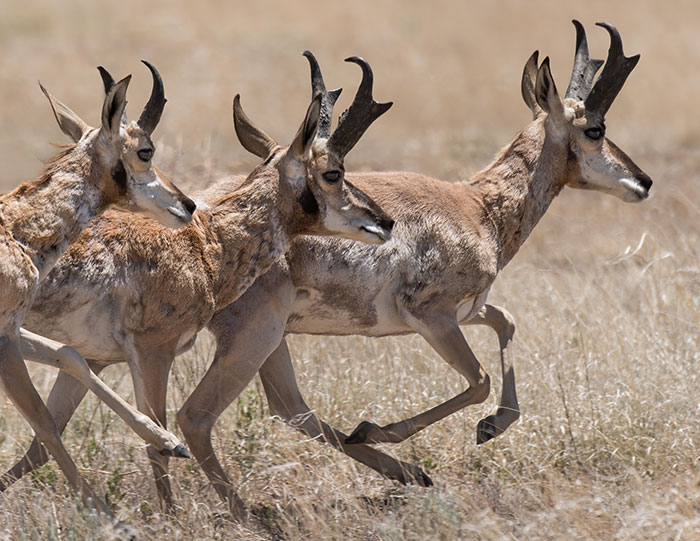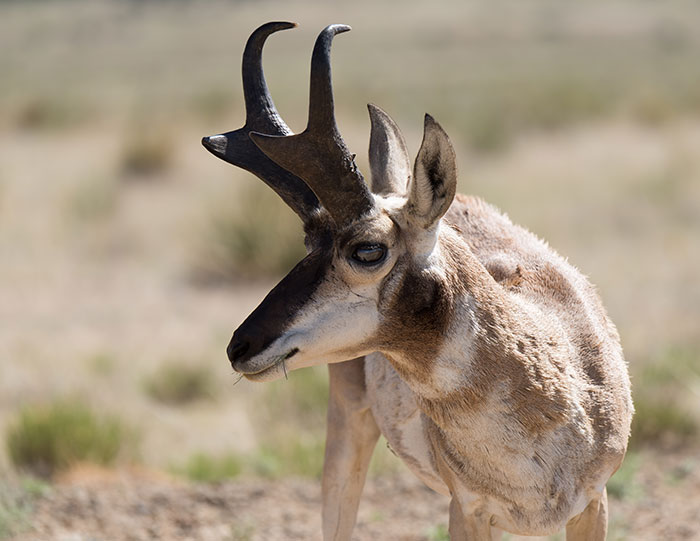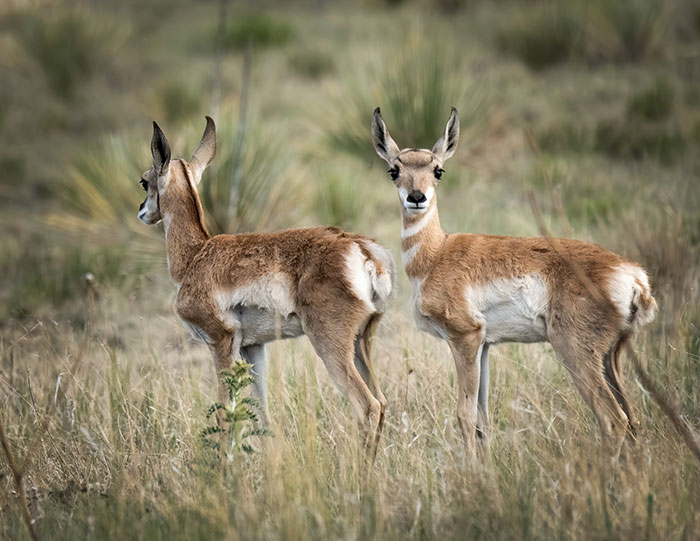Pronghorn are among my favorite animals to photograph. There are some characteristics and habits that make them a very desirable subject to both professional and hobbyist photographers. Unlike deer and elk, they can likely be spotted at any time of day, offering more opportunities for successful photos.

They are, however, most active at dawn and dusk. This is good since these are the times of day, known as the golden hours, when the quality of light is best for photography. Thanks to successful management and the diligent work of New Mexico Game and Fish personnel, pronghorn in New Mexico are found in high quantities. Again, this equates to more photo opportunities.
Some of the things that make pronghorn desirable to photographers also come with their own set of challenges. For instance, pronghorn typically inhabit wide open, expansive terrain. This increases your chances of spotting them. This, of course, also means they see you sooner as well. Since they have large eyes with 320° field of vision, and their eyesight is superior to that of humans, you may have difficulty getting close enough for a good photo.
You will need a steady hand and at least a 400mm telephoto lens if you are shooting a full frame camera. I use a 200-500mm VR (Vibration Resistant) lens on my Nikon D 850. Successful use of a telephoto requires the use of a camera support such as a tripod or bean bag. You can sometimes use a fence post as a makeshift support. Either way, shutter speeds of 1/500th of a second and up are required to minimize the effects of camera movement. Multiply that shutter speed several times if you plan to photograph running pronghorn since they are the fastest land mammal in North America.
Pronghorn country is plentiful in New Mexico, so there are many places you can find them. Drive almost any roadway through New Mexico’s wide-open spaces and the chances are good that you will spot pronghorn. There are a few areas where the numbers are so high that your photo opportunities are best. I will share a few of my favorite locations. The areas where I get my best photographs are in the northeast quadrant of New Mexico, which is mostly grasslands where pronghorn thrive.
Here’s where to find them: Though you will see many pronghorns while travelling I-25 between Las Vegas and Raton, you will need to travel along state roads with less traffic where you can safely pull off the roadway. An excellent route is NM 21 west of Springer at exit 412. The highway runs westward and then turns north toward Cimarron. Then, from Cimarron travel east along NM 58 back to I-25. You are sure to have many photo opportunities along this loop.
Next, turn northbound again at I-25 and travel 13.7 miles to Maxwell at exit 426. In Maxwell, turn north on NM 445. Just as you leave the small town, you will begin seeing pronghorn and possibly deer and elk. Continue north to US 64 and turn right. Travel northeast for about five miles and you will come to my favorite place to photograph pronghorn. The NRA Whittington Center is a beautiful outdoor recreation facility with lodging, camping, hiking and shooting ranges. Though the center’s primary offering is shooting sports, the property is home to herds of pronghorn, deer and elk. Drive along the well-maintained dirt roads and you will likely see plenty of animals to photograph. I often find pronghorn close enough to see eyelashes through my telephoto lens.

New Mexico is a large state with vast areas of desert and prairie land so there are many other places in the rest of the state where pronghorn can be found.
Photographing wildlife can be a great way to contribute to conservation. Whether you are a professional who creates photographs for publication or you are a hobbyist who shares your pictures with friends and family, your work can help create awareness and support of the animals you photograph. Of all the subjects I have photographed throughout my career, wildlife and nature photography has, over the years, become my favorite.

Conservation photography is a discipline that resonates with my values and personal mission. I am inspired by the knowledge and dedication that is characteristic of the professionals I work with at New Mexico Game and Fish. I feel a great responsibility and personal dedication to our mission. This dedication is what drives me to create photographs with a high degree of technical and aesthetic quality. It is my sincere hope that my photographs play a meaningful role in wildlife conservation.











































